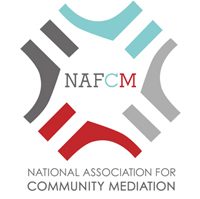One of the most contentious conflicts we have addressed in mediation and negotiation was for a church. Several years ago, we constructed a congregational healing program focused on the creation of genuine dialogue between two adversarial parishioner groups that had grown out of a power shift in church administration. The situation is one experienced by congregations everywhere (Rolf, 2007). In this case, a minister of a regional church accepted a new position out of state. He was much loved by the congregation and had a connection with all church groups – from Sunday school to the women’s prayer group. His management style was comprehensive. Due to his significant involvement in all church committees and boards, the congregation grew to look to him as the final word in all decisions.
The top down management style was effective while he was the church leader. Unfortunately, his departure to his new parish created a significant leadership vacuum that evolved into a power struggle between the associate pastor and the church education director. The associate pastor’s position was one of support with no true recognized authority. Church education was led by an individual who was able to act with a fair amount of autonomy. Within two weeks of the minister’s departure, an interim minister was appointed. The minister quickly set about to acquaint himself with internal administration functions. His leadership style was delegative or “hands-off”. He stepped back from contributing to any decision-making process, noting his position was to serve in temporal manner. This was the beginning of the conflict.
The Conflict
Soon, two leadership powers, the associate pastor and the director of education, disagreed on a request for a pay raise for the associate pastor. The associate pastor felt the added duties and responsibilities created by the minister’s departure earned her a salary increase. The education director took exception. The battle lines were drawn: Associate Pastor v. Education Director. Emotions, hurt feelings, and families leaving the church were just some of the problems that remained a short 24 months after the minister’s departure. Congregations are not immune to conflict. As explained by Kenneth Haugk, founder of Stephens Ministry, antagonism can “obliterate the sense of the presence of God’s love in individuals” (1998, p.40). If the conflict was not addressed, the potential for the schism to widen beyond repair was a real danger (Burgess, Burgess and Kaufman, 2006).
The Proposal
A plan to facilitate emotional recovery of the church was critical. As stakeholders, all members needed to play a role in the recovery. Each member had to believe that their work would have significant impact on their fellow parishioners and the future of their church. Every member of the congregation was identified on one side of the schism or the other. The most important first step was to enlist a trusted, non-biased facilitator. This individual would solicit the help of congregants from opposing sides to participate in a reconciliation program. The aim would be to bring individuals together to explain their emotions, experiences and concerns in a non-threatening, non-judgmental environment (Carlson, 1998).
The Process
The first step in the journey began with an in depth interview assessment of the conflict which included member attitudes, implications for lost membership, communication barriers, and broken networks and friendships. The initial interviews were with key church members identified by church administration and committee heads. This very important interview process identified the “congregational team” who would be able to build the reconciliation process. Once the team members were identified, the first stage of the conciliation selection began. Of prime importance was the need to have equal representation on both sides. This included personality and influence strength as well as representative numbers. We understood that there would never be a selection configuration that would be truly equal in representation – but we had to get as close as possible. Each group member had the potential to contribute to a transformation of an opponent (Kreisberg, 2003). The group of 10 church members were identified by interview and invited to participate in a conciliation process. Each member was asked to sign a letter of commitment to see the 6 week process to completion.
Six weekly meetings were scheduled at an offsite, neutral location. Three two week topics were addressed:
- Creating Dialogue / Identifying Issues – Week 1 and 2
- The Healing Process / Exploring Reconciliation – Week 3 and 4
- Creating Church Outreach – Week 5 and 6
The six week exercise was powerful. Witnessing the building of trust and development of genuine dialogue was inspiring. Very special people made this process possible. Make no mistake, each member played a vital role to the process.
But the exercise did not stop there. The congregational team then committed to building what was termed a “healing and continued outreach” effort. These exercises are certainly not “one and you are done” processes. There were many twists and turns in the process that could have derailed the progression. Recoveries are long term journeys and require the team and the congregation to remain committed. How that is accomplished….we’ll save that for next month’s blog!
References
Burgess, H., & Burgess, G. (1996). Constructive confrontation: A transformative approach to intractable conflicts. Mediation Quarterly, 13(4), 305–322
Carlson, M. (1998). A model for improving a group. The Institute of Government.
Haugk, K., & Perry, R. (1988). Antagonists in the church: How to identify and deal with destructive conflict. Minneapolis: Augsburg Pub. House.
Kreisberg, L. (2003). Identity Issues. Beyond Intractability http://www.beyondintractability.org/essay/identity-issues
Rolfe, D. (2007). The minister goes on medical leave: A trigger for conflict in the congregation. Pastoral Psychology, 55(3), 353-366


Leave a comment